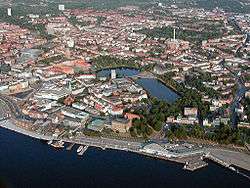Kiel
| Kiel | |||
|---|---|---|---|
|
Mid-August 2003 aerial view of the city centre | |||
| |||
 Kiel | |||
| Coordinates: 54°20′N 10°8′E / 54.333°N 10.133°ECoordinates: 54°20′N 10°8′E / 54.333°N 10.133°E | |||
| Country | Germany | ||
| State | Schleswig-Holstein | ||
| District | Urban district | ||
| Government | |||
| • Lord Mayor | Ulf Kämpfer [1] | ||
| • Governing parties | SPD / Greens / South Schleswig Voter Federation | ||
| Area | |||
| • City | 118.6 km2 (45.8 sq mi) | ||
| Population (2015-12-31)[2] | |||
| • City | 246,306 | ||
| • Density | 2,100/km2 (5,400/sq mi) | ||
| • Metro | 643,594[3] | ||
| Time zone | CET/CEST (UTC+1/+2) | ||
| Postal codes | 24103–24159 | ||
| Dialling codes | 0431 | ||
| Vehicle registration | KI | ||
| Website | www.kiel.de | ||

Kiel (German: [ˈkiːl]) is the capital and most populous city in the northern German state of Schleswig-Holstein, with a population of 240,832 (June 2014).
Kiel lies approximately 90 kilometres (56 mi) north of Hamburg. Due to its geographic location in the north of Germany, the southeast of the Jutland peninsula, and the southwestern shore of the Baltic Sea, Kiel has become one of the major maritime centres of Germany. For instance, the city is known for a variety of international sailing events, including the annual Kiel Week, which is the biggest sailing event in the world. The Olympic sailing competitions of the 1936 and the 1972 Summer Olympics were held in Kiel.[4]
Kiel has also been one of the traditional homes of the German Navy's Baltic fleet, and continues to be a major high-tech shipbuilding centre. Located in Kiel is the Helmholtz Centre for Ocean Research Kiel (GEOMAR) at the University of Kiel. Kiel is an important sea transport hub, thanks to its location on the Kiel Fjord (Kieler Förde) and the busiest artificial waterway in the world, Kiel Canal (Nord-Ostsee-Kanal). A number of passenger ferries to Sweden, Norway, Russia, and other countries operate from here. Moreover, today Kiel harbour is an important port of call for cruise ships touring the Baltic Sea.
Kiel was one of the founding cities of original European Green Capital Award in 2006.[5] In 2005 Kiel's GDP per capita was €35,618, which is well above Germany's national average, and 159% of the European Union's average.[6]
Within Germany and parts of Europe, the city is known for its leading handball team, THW Kiel. The city is home to the University of Kiel (established in 1665).
The name of the city is most likely derived from the wedge form of its bay (Keil in German).[7]
History
Middle Ages
Kiel Fjord was probably first settled by Normans or Vikings who wanted to colonize the land which they had raided, and for many years they settled in German villages. This is evidenced by the geography and architecture of the fjord. The city of Kiel was originally founded in 1233 as Holstenstadt tom Kyle by Count Adolf IV of Holstein, and granted Lübeck city rights in 1242 by Adolf's eldest son, John I of Schauenburg. Being a part of Holstein, Kiel belonged to the Holy Roman Empire and was situated only a few kilometres south of the Danish border.[8]
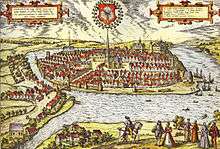
Kiel, the capital of the county (later duchy) of Holstein, was a member of the Hanseatic League from 1284 until it was expelled in 1518 for harbouring pirates. In 1431, the Kieler Umschlag (trade fair) was first held, which became the central market for goods and money in Schleswig-Holstein, until it began to lose significance from 1850 on, being held for the last time in 1900, until recently, when it has been restarted.
Modern times
The University of Kiel was founded on 29 September 1665, by Christian Albert, Duke of Holstein-Gottorp. A number of important scholars, including Theodor Mommsen, Felix Jacoby, Hans Geiger and Max Planck, studied or taught there.

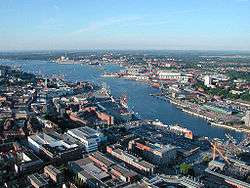
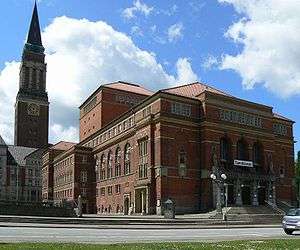
From 1773 to 1864, the town belonged to the King of Denmark. However, because the king ruled Holstein as a fief of the Holy Roman Empire only through a personal union, the town was not incorporated as part of Denmark proper. Thus Kiel belonged to Germany, but it was ruled by the Danish king. Even though the Empire was abolished in 1806, the Danish king continued to rule Kiel only through his position as Duke of Holstein, which became a member of the German Confederation in 1815. When Schleswig and Holstein rebelled against Denmark in 1848 (the First Schleswig War), Kiel became the capital of Schleswig-Holstein until the Danish victory in 1850.
During the Second Schleswig War in 1864, Kiel and the rest of the duchies of Schleswig and Holstein were conquered by a German Confederation alliance of the Austrian Empire and the Kingdom of Prussia. After the war, Kiel was briefly administered by both the Austrians and the Prussians, but the Austro-Prussian War in 1866 led to the formation of the Province of Schleswig-Holstein and the annexation of Kiel by Prussia in 1867. On 24 March 1865 King William I based Prussia's Baltic Sea fleet in Kiel instead of Danzig (Gdańsk). The Imperial shipyard Kiel was established in 1867 in the town.
When William I of Prussia became Emperor William I of the German Empire in 1871, he designated Kiel and Wilhelmshaven as Reichskriegshäfen ("Imperial War Harbours"). The prestigious Kiel Yacht Club was established in 1887 with Prince Henry of Prussia as its patron. Emperor Wilhelm II became its commodore in 1891.
Because of its new role as Germany's main naval base, Kiel very quickly increased in size in the following years, from 18,770 in 1864 to about 200,000 in 1910. Much of the old town centre and other surroundings were levelled and redeveloped to provide for the growing city. The Kiel tramway network, opened in 1881, had been enlarged to 10 lines, with a total route length of 40 km (25 mi), before the end of World War I.
Kiel was the site of the sailors' mutiny which sparked the German Revolution in late 1918. Just before the end of World War I, the German fleet stationed at Kiel was ordered to be sent out on a last great battle with the Royal Navy. The sailors, who thought of this as a suicide mission which would have no effect on the outcome of the war, decided they had nothing to lose and refused to leave the safety of the port. The sailors' actions and the lack of response of the government to them, fuelled by an increasingly critical view of the Kaiser, sparked a revolution which caused the abolition of the monarchy and the creation of the Weimar Republic.
.jpg)
During World War II, Kiel remained one of the major naval bases and shipbuilding centres of the German Reich. There was also a slave labour camp for the local industry.[9] Because of its status as a naval port and as production site for submarines, Kiel was heavily bombed by the Allies during World War II. The bombing destroyed more than 80% of the remaining old town, 72% of the central residential areas, and 83% of the industrial areas.[10] During the RAF bombing of 23/24 July 1944, Luftwaffe fighters tried to intercept the spoof (i.e. decoy) force instead of the main force attacking Kiel,[11] and there was no water for three days; trains and buses did not run for eight days and there was no gas available for cooking for three weeks.[12] There were several bombing raids of the port area during the period 20 February – 20 April 1945 which successfully eliminated many U-Boats, and the few large warships (cruisers Hipper, Scheer, and Koln) still afloat at that time. Although the town was beyond the stop-line set for the western Allies in the German surrender at Lüneburg Heath, it and its port, its scientists, and the canal were seized by a British T-Force led by Major Tony Hibbert on 5 May 1945.[13][14] This forestalled capture of the town by the Soviets, whom the Allies expected to advance from Germany to Denmark in violation of the Yalta agreement.[15]
Just like other heavily bombed German cities, the city was rebuilt after the war. In 1946, Kiel was named the seat of government for Schleswig-Holstein, and it officially became the state's capital in 1952.
Today, Kiel is once again an important maritime centre of Germany, with high-tech shipbuilding, submarine construction and one of the three leading institutions in the field of marine sciences in Europe, the IFM-GEOMAR. Regular ferries to Scandinavia and Russia, as well as the largest sailing event in the world called the Kiel Week (Kieler Woche) in German and The Kiel Regatta in English. The Kieler Umschlag is another festival, which has been taking place again since 1975. Kiel is also home to a large service sector and a number of research institutions including the University of Kiel, which is the oldest, largest, and most prestigious university in the state.
Main sights

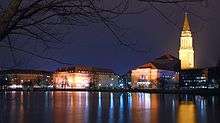
The oldest building in the city is the 13th century Nikolaikirche (Kiel) (St Nicholas' Church), which has a sculpture by Ernst Barlach in front of it called Geistkämpfer.
Kiel is Schleswig-Holstein's largest city, and therefore Kiel's shopping district is a major attraction, and will see further improvement and renovation efforts in the upcoming years. Kiel's Holstenstraße (Holsten Street) is one of the longest shopping streets in Germany. The Rathaus (town hall), which was built in 1911, has an operating paternoster and the design of its tower was based on one in Venice. The square in front of it is bordered by a lake and the Opera House. There are also a number of lakes and parks in the city centre, e.g. Schrevenpark (Schreven Park). There are two botanical gardens, the Old Botanical Garden and New Botanical Garden.
As Kiel is situated near the sea, the beaches to the north of Kiel such as Strande, Kiel-Schilksee, Möltenort and Laboe are also popular places to visit in spring and summer.
Kiel Week, more properly known in English as the Kiel Regatta, is the largest sailing event in the world and takes place every year in the last full week in June. Many thousands of boats and ships of all kinds and eras take part in the parade. Kiel Week is also a festival, Volksfest and fair as well as a maritime event. There are a number of yachting and sailing clubs in picturesque settings.
Kiel also features a number of museums, including zoological, geological, historical, fine art, industrial, and military museums. Notable is the Stadt- und Schifffahrtsmuseum Warleberger Hof (City and Maritime Museum), which belongs to the association museen am meer. In addition to preserving architecture from the 16th Century and historic rooms with painted stucco ceilings, it displays urban and cultural exhibits of the 19th and 20th Century.[16] Particularly intriguing is the history of the carnival in Kiel.[16] Laboe is home to the Laboe Naval Memorial, as well as the World War II submarine U-995, which are popular tourist sites.
 Holstenstraße Kiel 1917 (Willy Lucas)
Holstenstraße Kiel 1917 (Willy Lucas) Special issue stamp Kiel Week 1982
Special issue stamp Kiel Week 1982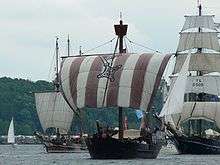 Historic ships at Kiel Week
Historic ships at Kiel Week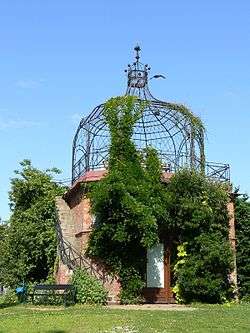 Old Botanical Garden Kiel
Old Botanical Garden Kiel U995 Laboe
U995 Laboe Warleberger Hof
Warleberger Hof
Climate
Kiel has an oceanic climate (Cfb in the Koeppen climate classification).
| Climate data for Kiel | |||||||||||||
|---|---|---|---|---|---|---|---|---|---|---|---|---|---|
| Month | Jan | Feb | Mar | Apr | May | Jun | Jul | Aug | Sep | Oct | Nov | Dec | Year |
| Record high °C (°F) | 13.4 (56.1) |
16.0 (60.8) |
21.4 (70.5) |
29.3 (84.7) |
33.5 (92.3) |
34.4 (93.9) |
34.2 (93.6) |
35.0 (95) |
30.1 (86.2) |
25.2 (77.4) |
19.5 (67.1) |
14.8 (58.6) |
35 (95) |
| Average high °C (°F) | 2 (36) |
3 (37) |
6 (43) |
11 (52) |
16 (61) |
20 (68) |
21 (70) |
21 (70) |
18 (64) |
13 (55) |
8 (46) |
4 (39) |
11.9 (53.4) |
| Daily mean °C (°F) | 0.7 (33.3) |
1.0 (33.8) |
3.3 (37.9) |
6.7 (44.1) |
11.5 (52.7) |
15.1 (59.2) |
16.3 (61.3) |
16.3 (61.3) |
13.3 (55.9) |
9.7 (49.5) |
5.3 (41.5) |
2.1 (35.8) |
8.44 (47.19) |
| Average low °C (°F) | −2 (28) |
−2 (28) |
0 (32) |
3 (37) |
7 (45) |
11 (52) |
12 (54) |
12 (54) |
10 (50) |
7 (45) |
3 (37) |
0 (32) |
5.1 (41.2) |
| Record low °C (°F) | −20.8 (−5.4) |
−24.8 (−12.6) |
−14.5 (5.9) |
−6.9 (19.6) |
−3.0 (26.6) |
1.6 (34.9) |
4.3 (39.7) |
4.7 (40.5) |
0.6 (33.1) |
−6.2 (20.8) |
−12.0 (10.4) |
−15.1 (4.8) |
−24.8 (−12.6) |
| Average rainfall mm (inches) | 65 (2.56) |
40 (1.57) |
54 (2.13) |
52 (2.05) |
57 (2.24) |
69 (2.72) |
79 (3.11) |
69 (2.72) |
66 (2.6) |
67 (2.64) |
86 (3.39) |
74 (2.91) |
778 (30.64) |
| Average rainy days (≥ 1.0 mm) | 18 | 15 | 13 | 14 | 12 | 14 | 15 | 16 | 15 | 17 | 18 | 18 | 185 |
| Average relative humidity (%) | 87 | 84 | 81 | 77 | 74 | 74 | 76 | 78 | 81 | 85 | 86 | 87 | 80.8 |
| Mean monthly sunshine hours | 38.5 | 64.4 | 106.4 | 171.1 | 230.2 | 237.1 | 218.7 | 220.4 | 150.5 | 102.3 | 52.0 | 34.9 | 1,626.5 |
| Source: DWD; wetterkontor.de; ; | |||||||||||||
Economy
Kiel's economy is dominated by the service sector, transport and maritime industries. Kiel is also one of the major ports of the German Navy, and a leading centre of German high-tech military and civil shipbuilding. Kiel is the home of Howaldtswerke-Deutsche Werft, a shipyard founded in 1838 famed for its construction of submarines. HDW built the first German submarine Brandtaucher in 1850, and is today a subsidiary of ThyssenKrupp Marine Systems, the leading German group of shipyards.
Statistics
In 2005, the GDP per person was €35,618, which is well above the national average of Germany and 159% of the European Union average.[6]
| 2005 EUROSTAT[17] | Nominal GDP per capita |
|---|---|
| €35,618 | |
| €24,250 | |
| €27,219 | |
| €22,400 |
Notable Companies
Some of the most notable companies having branches or their Headquarters in Kiel are:
Ferry Operators
Military Contractors
- Raytheon
- Rheinmetall
- ThyssenKrupp Marine Systems (through their subsidiary Howaldtswerke-Deutsche Werft)
Engineering & Industrial machinery
- Heidelberger Druckmaschinen
- Voith
- Vossloh
- Caterpillar Inc. (through their subsidiary MaK)
Others
Kiel is also home to several insurances and banks, most notably the HSH Nordbank, Provinzial NordWest, Förde Sparkasse, Kieler Volksbank eG and Evangelischen Bank eG.
There is also an active startup scene in Kiel with startup accelerator StarterKitchen and startups like SciEngines GmbH, Real-Eyes, myBoo, SealMedia, Cliplister, Druckpreis.DE, promotionbasis.de, Yoosello, GetAnEdge, Flowy Apps, fraguru, lokalportal, PianoMotion and ubique art.[18][19][20][21][22][23][24][25][26]
Kiel is home to several media companies, including a branch of the Norddeutscher Rundfunk producing one radio channel and several local programs in Kiel, a station of the British Forces Broadcasting Service, the daily newspaper Kieler Nachrichten and several smaller local radio channels and magazines.
Sport
There are a number of sports venues in Kiel, most notably the Sparkassen-Arena (formerly known as Baltic Sea Hall or Ostseehalle), which is the home ground of one of the most successful team handball clubs in the world and multiple German champion, THW Kiel. There is currently no Bundesliga football club in Kiel, but 3. Liga side Holstein Kiel plays at Holstein-Stadion.
Districts
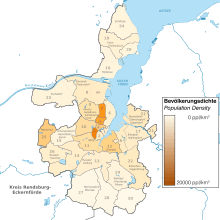
The city districts of Düsternbrook, Schreventeich, Ravensberg, and Blücherplatz are popular places to live with many 19th century buildings, villas, and tree-lined streets. The government offices, ministries and parliament of the state of Schleswig-Holstein are also mainly based in these neighbourhoods, particularly Düsternbrook. In contrast to the heavy bomb damage inflicted on the central parts of the city during World War II, most of the residential areas were not severely damaged. Hence, Kiel's more modern-style inner city and Kiel's more historic/elaborate residential areas stand in architectural contrast to one another.
There are plans for large-scale improvement and building efforts for the inner city, providing better pavements, better access to and view of the waterfront, and a generally more attractive feel to the place. These plans, most notably the "Kleiner Kiel Kanal", a restoration of a historic canal that was filled in to make place for road infrastructure, are to be implemented in the next few years.[27]
Transport
Kiel is situated near an important pan-European motorway, the A 7, which connects northern Europe with central and southern Europe.
Kiel has a central station with hourly trains to Hamburg, Lübeck, Flensburg, and to Husum. Moreover, the Intercity Express (ICE) connects Kiel with Berlin, Frankfurt, Cologne, and Munich.
Kiel has public transport through the local company KVG, providing bus service within the city, Autokraft and Verkehrsbetriebe Kreis Plön providing regional bus service, and the Schlepp- und Fährgesellschaft Kiel, providing public transport on the fjord with ferries.
Kiel also has 8 regional train stations within the city proper,[28][29] which are connected with each other, the main rail station Kiel Hbf and other stations by regional trains, which can be used within the boundaries of the city with a normal bus ticket.[30]
Kiel is a significant port for passenger and cargo shipping from Germany to Scandinavia, the Baltic States, and Russia. Passenger ferries operate to and from Gothenburg in Sweden (Stena Line, 13½ hours, daily), Oslo in Norway (Color Line, 19½ hours, daily), and Klaipėda in Lithuania (DFDS Lisco, 21 hours, 6 times per week). Cargo ferries operate from and to Saint Petersburg in Russia (DFDS Lisco, twice a week), and Kaliningrad in Russia (NSA, once a week).
The nearest international airport is Hamburg Airport, which is situated approximately 90 kilometres (56 mi) to the south of Kiel. There is a shuttle bus service (KIELIUS) operating between Hamburg Airport and Kiel central station. There is also an airport at Lübeck.
Notable people
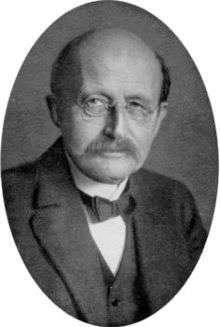

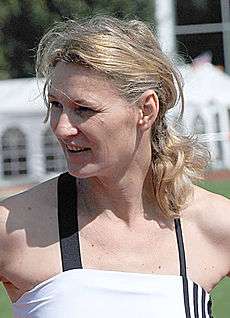
- Detlev Bork (born 1967), classical and flamenco guitarist
- Eric Braeden (born 1941), actor
- Ernst Busch (1900–1980), actor, writer & collector of songs
- Britta Carlson (born 1978), footballer
- Francisco Copado (born 1974), footballer
- Heinrich Dahlinger (1922–2008), field handball player
- Friedrich Wilhelm Hermann Delffs (1812–1894), chemist
- Alfred Brinckmann (1891–1967), chessmaster
- Tomma Abts (born 1967), painter and Turner Prize winner
- Feridun Zaimoglu (born 1964), author and playwright
- Ulrich Schnauss (born 1977), musician
- Carl Loewe (1796–1869), composer
- Karl Leonhard Reinhold (1757–1823), philosopher
- Kim Dotcom (born 1974), internet businessman
- Bruno Diekmann (1897–1982), politician
- Cora E. (Sylvia Macco) (born 1968), musician
- George Eyser (1870-?), athlete
- Erna Flegel (1911–2006), nurse
- Thilo Martinho (Thilo Herrmann) (born 1960), musician
- Michael F. Feldkamp (born 1962), historian
- Heinrich Heesch (1906–1995), mathematician
- Rudolf Hell (1901–2002), inventor
- Lukas Heller (1930-1988), screenwriter
- Heike Henkel (born 1964), athlete
- Johannes Wolfgang Willy Friedlieb Heuer (1910–1993), businessman
- August Howaldt (1809–1889), founder of Howaldtswerke
- Sigrid Hunke (1913–1999), author
- Hans Geiger (1882–1945), physicist, co-inventor of the Geiger–Müller Counter 1928 in Kiel
- Angelique Kerber (born 1988), tennis player
- Otto Kretschmer (1912–1998), U-boat commander
- Oswalt Kolle (1928–2010), author
- Andreas Köpke (born 1962), footballer
- Dieter Laser (born 1942), actor
- August Leskien (1840–1916), linguist
- Henri Lehmann (1814–1882), painter
- Helmut Lemke (1907–1990), politician
- Marina Lewycka (born 1946), author
- Detlev von Liliencron (1844–1909), poet
- Judith Malina (1926–2015), German-born American actress
- Gustav Adolf Michaelis (1798–1848), obstetrician and physician
- Hermann Michel (1912–1984?), SS officer
- Egon Müller (born 1948), Motorcycle speedway rider
- Walther Müller (1905–1979), physicist, co-inventor of the Geiger–Müller Counter 1928 in Kiel
- Peter III of Russia (1728–1762)
- Max Planck (1858–1947), physicist
- Heinz Reincke (1925–2011), actor
- Sidney Sam (born 1988), footballer
- Harro Schulze-Boysen (1909–1942), Resistance fighter
- Ernst von Salomon (1902–1972), writer
- Heinrich Springer (1914–2007), Waffen-SS knights cross winner
- Manfred Stahnke (born 1951), composer
- Ernst Steinitz (1871–1928), mathematician
- Gerhard Stoltenberg (1928–2001), politician (CDU), minister and minister-president
- Johannes Nikolaus Tetens (1736–1807), philosopher
- Ferdinand Tönnies (1855–1936), sociologist, philosopher
- Carl Friedrich von Weizsäcker (1912–2007), physicist, philosopher
- Heinrich Wöhlk (1913-1991), physicist
- Heiner Zieschang (1936–2004), mathematician
- Carl Zuckmayer (1896–1977), writer and playwright
International relations
Twin towns – sister cities
|
See also
References
- ↑ Landeshauptstadt Kiel. "Kiels Oberbürgermeister".
- ↑ "Statistikamt Nord – Bevölkerung der Gemeinden in Schleswig-Holstein 4. Quartal 2015] (XLS-file)". Statistisches Amt für Hamburg und Schleswig-Holstein (in German).
- ↑ "Growth - KielRegion - Association for Business Development Kiel / Germany".
- ↑ "General Information". Kieler Woche. Archived from the original on 2005-12-30. Retrieved 2006-03-13.
- ↑ "European Grean Capitals". European Commission. Retrieved 16 May 2015.
- 1 2 GDP per person 2005 in Euro
- ↑ Map Kiel
- ↑ "A brief history of Kiel". Kiel - a portrait of the city. City of Kiel. Retrieved 2007-07-01.
- ↑ Victor, Edward. "Alphabetical List of Camps, Subcamps and Other Camps". Retrieved 2008-07-25.
- ↑ "The Navy changed the face of Kiel". Kiel — a portrait of the city. City of Kiel. Retrieved 2008-07-25.
- ↑ Jones, R. V. (1978). Most Secret War: British Scientific Intelligence 1939-1945. London: Hamish Hamilton. p. 466. ISBN 0-241-89746-7.
- ↑ Campaign Diary: July 44, Royal Air Force Bomber Command 60th Anniversary site. Accessed 4 May 2007
- ↑ Jones, Gwilym Thomas (2001). Living history chronicles. General Store Publishing House. pp. 102–104. ISBN 1-894263-50-2. Retrieved 31 August 2009.
- ↑ A diary of ‘T’ Force operations in KIEL ARCRE—Archive research & document copying
- ↑ "Operation Eclipse". History Learning Site.
- 1 2 "Kieler Stadtmuseum Warleberger Hof", City of Kiel webpage, in German
- ↑ "Regional GDP per inhabitant in the EU 27" (PDF). Eurostat. Retrieved 2008-08-19.
- ↑ "Imprint". real-eyes.eu. REALEYES GmbH. Retrieved 2015-05-17.
- ↑ "Imprint - my Boo". bamboo bike, bikes – Kiel, Germany. Retrieved 2015-05-17.
- ↑ "EDGE | Edge Impressum". light-instruments.de. Retrieved 2015-05-17.
- ↑ "Flowy Apps – Imprint". flowyapps.com. Retrieved 2015-05-17.
- ↑ "fraguru - the art of questioning our lives". fraguru.org. Retrieved 2015-05-17.
- ↑ "Mein Ort. Meine Nachbarn. Mein Lokalportal.". Lokalportal. Retrieved 2015-05-17.
- ↑ "Impressum |". pianomotion.com. Retrieved 2015-05-17.
- ↑ "Home | ubique art - Die Austellung ist überall". ubique-art.starterkitchen.de. Retrieved 2015-05-17.
- ↑ "Firmensitze von Deutschen Startups | Gründerszene" [Headquarter Locations of German Startups | Gründerszene]. gruenderszene.de. Retrieved 2015-05-17.
- ↑ "Kleiner Kiel Kanal". kleiner-kiel-kanal.de. Retrieved 2015-08-27.
- ↑ Suchsdorf, Kronshagen, Kiel-Hassee CITTI-Park, Kiel-Russee, Melsdorf, Kiel-Schulen am Langsee, Kiel-Elmschenhagen, Raisdorf
- ↑ "Liniennetzplan Kiel (Public Transport Plan Kiel)" (PDF). KVG Kiel. Retrieved 16 May 2015.
- ↑ "VRK Tarifzonenplan (Tariff Zone Plan Kiel)" (PDF). Verkehrsregion Kiel. Retrieved 16 May 2015.
- ↑ "Twin cities of Kiel". kiel.de (in German).
- ↑ Griffin, Mary (2011-08-02). "Coventry's twin towns". Coventry Telegraph. Retrieved 2013-08-06.
- ↑ "Coventry - Twin towns and cities". Coventry City Council. Archived from the original on 2013-04-12. Retrieved 2013-08-06.
- ↑ P.C., Net. "Gdynia - International Gdynia - International co-operation of Gdynia". www.gdynia.pl.
External links
| Wikimedia Commons has media related to Kiel. |
| Wikivoyage has a travel guide for Kiel. |
 |
Eckernförde, Flensburg | Baltic Sea, Århus | Baltic Sea, Schönberg, Laboe, Copenhagen |  |
| Rendsburg | |
Fehmarn island, Oldenburg in Holstein | ||
| ||||
| | ||||
| Bordesholm, Itzehoe | Neumünster, Bad Segeberg, Hamburg | Lübeck |
